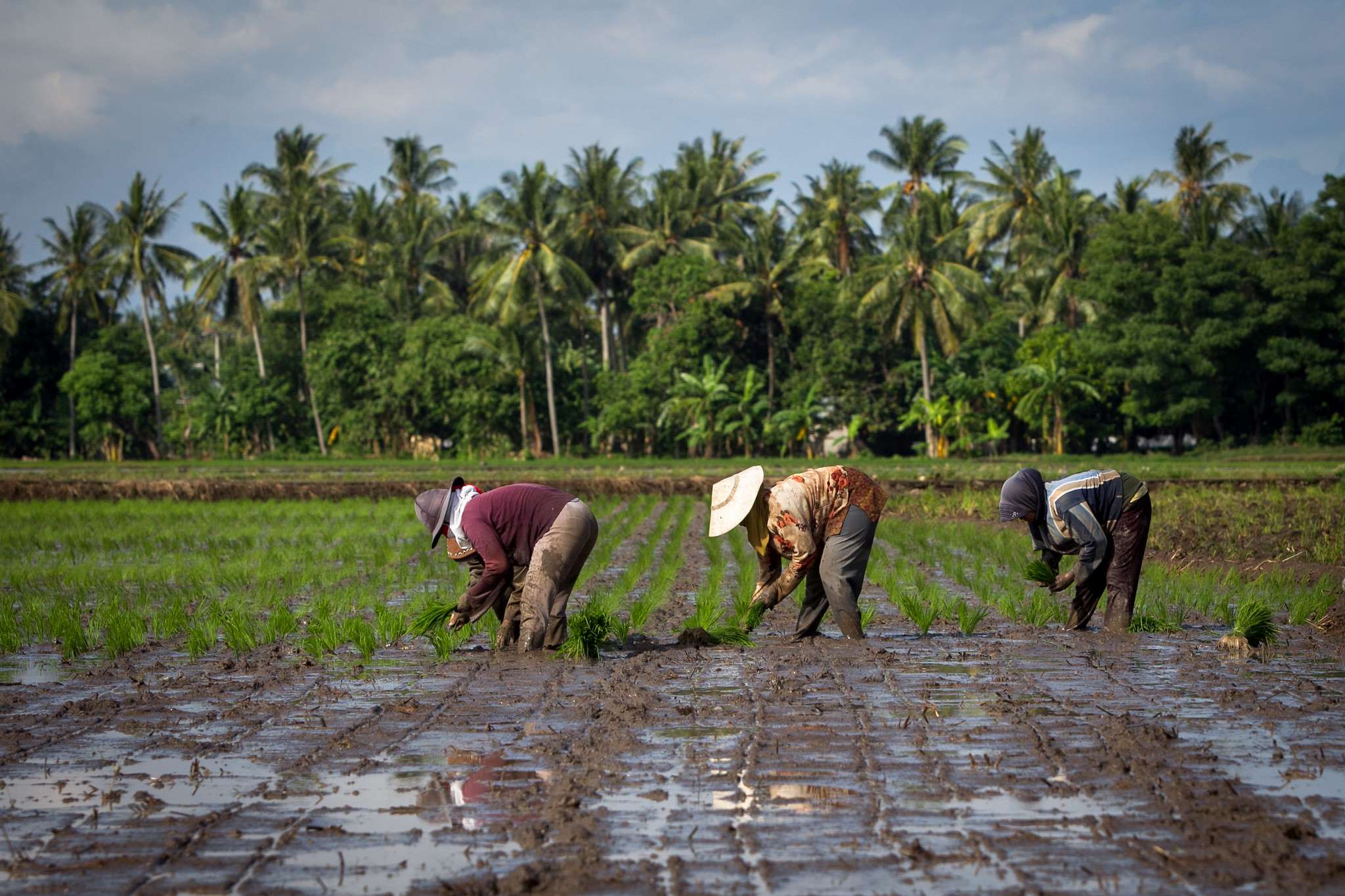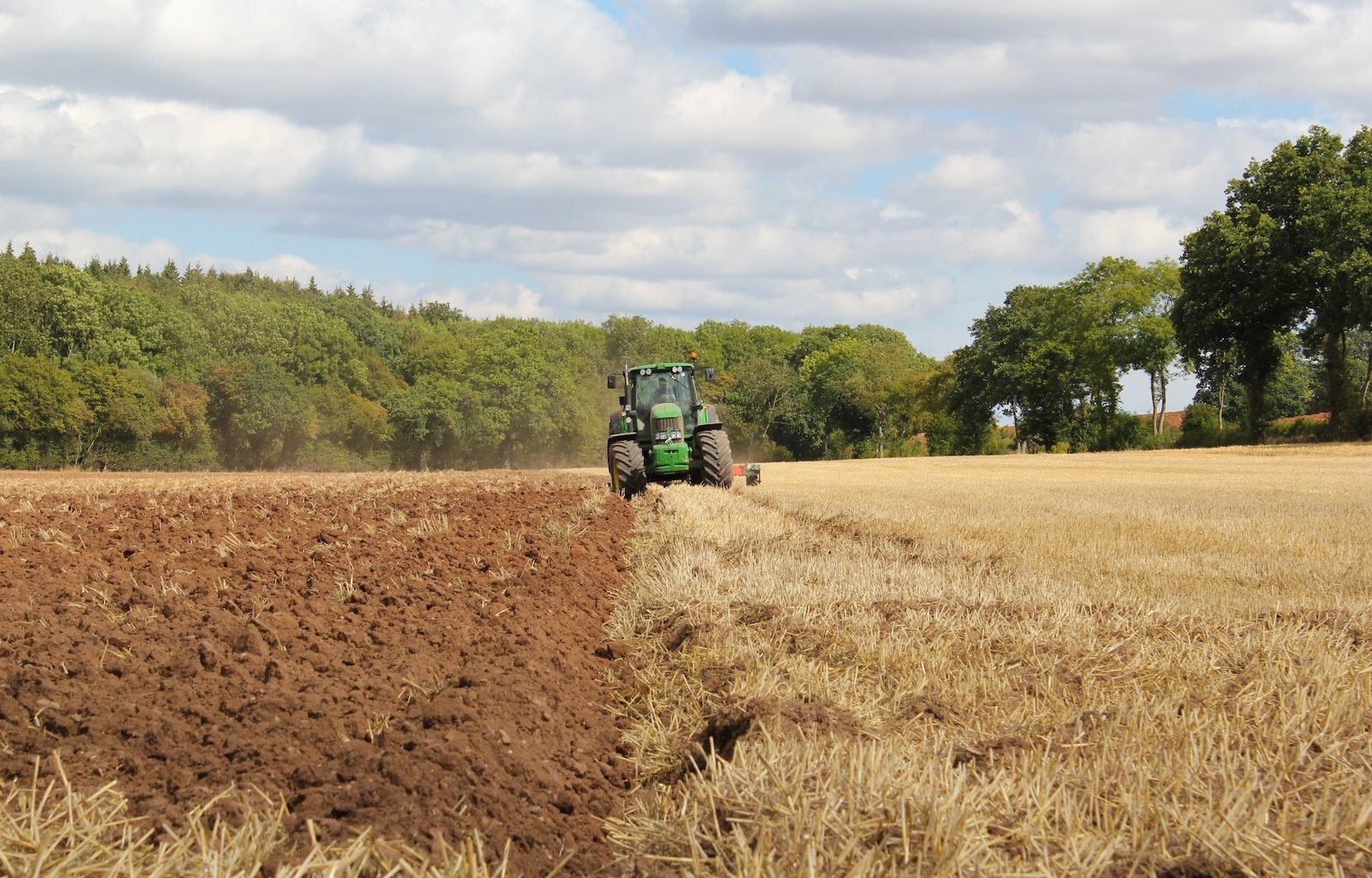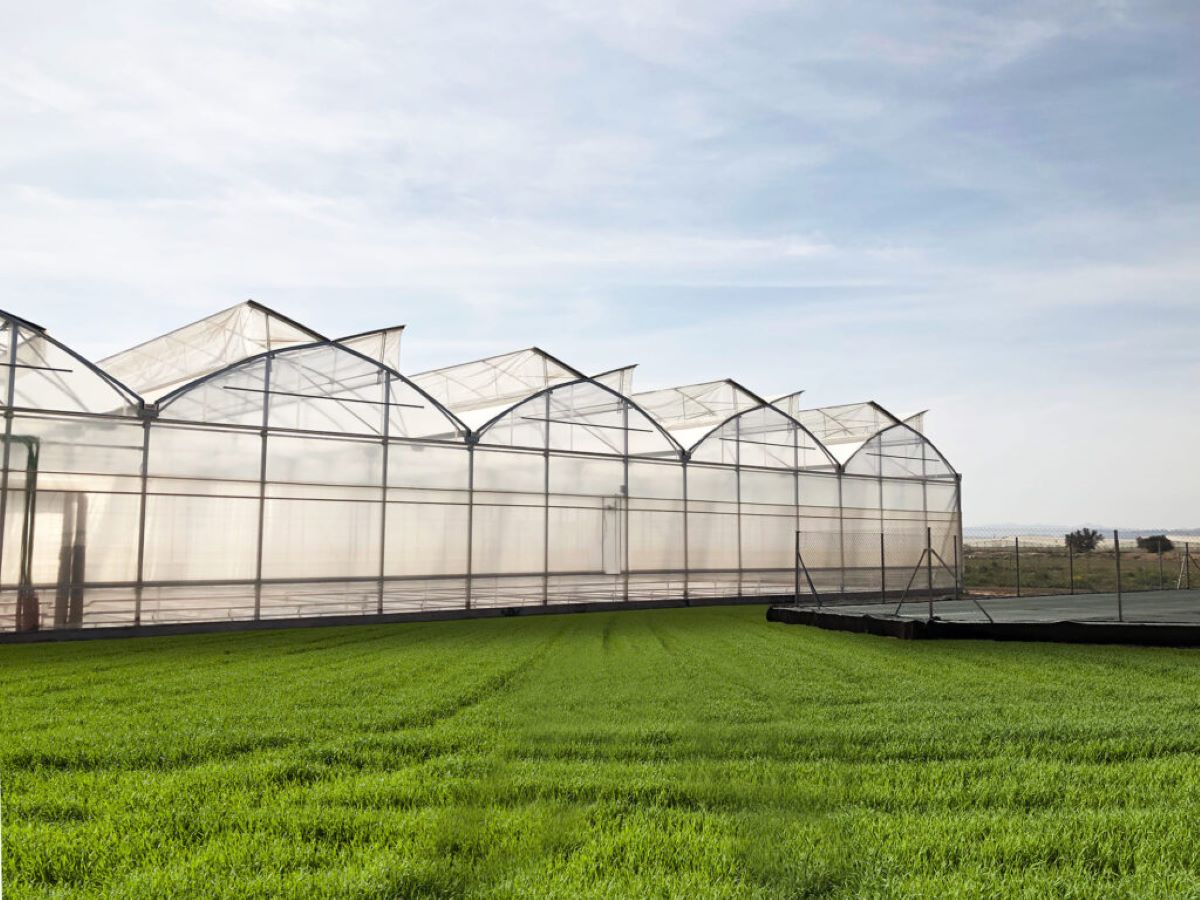Home>Gardening News and Trends>Latest News>What Kind Of Agricultural System Is Shifting Cultivation?


Latest News
What Kind Of Agricultural System Is Shifting Cultivation?
Published: January 25, 2024
Discover the latest news on shifting cultivation, a unique agricultural system that involves clearing and cultivating land for short periods. Learn about its benefits, drawbacks, and sustainability.
(Many of the links in this article redirect to a specific reviewed product. Your purchase of these products through affiliate links helps to generate commission for Chicagolandgardening.com, at no extra cost. Learn more)
Table of Contents
Introduction
Welcome to the world of shifting cultivation – an ancient agricultural system that has prevailed for thousands of years in various parts of the world. Also known as swidden agriculture or slash-and-burn farming, shifting cultivation is a method of farming that involves clearing land, burning vegetation, and rotating crop fields in a cyclical manner. It has been practiced by indigenous communities in regions such as Southeast Asia, Africa, and parts of South America.
Shifting cultivation is not just a farming technique; it encompasses a unique way of life, deeply rooted in cultural traditions and sustainable practices. This system has allowed communities to nurture their relationship with the land, relying on it for their livelihoods and survival. While there has been controversy surrounding shifting cultivation due to its perceived environmental impact, it is important to understand the historical and socio-economic context in which this agricultural system originated.
The origins of shifting cultivation can be traced back to the early stages of human civilization when nomadic communities discovered that by burning sections of forests, the nutrients released from the ash would fertilize the soil. This process allowed for the cultivation of crops on previously untouched land and provided a means for communities to sustain themselves.
Throughout history, shifting cultivation has played a vital role in the survival and resilience of indigenous peoples. It has provided them with a sustainable means of agriculture while preserving the biodiversity of their local ecosystems. Additionally, shifting cultivation has fostered a deep spiritual and cultural connection to the land, with indigenous communities considering themselves as custodians of nature.
However, as the world undergoes rapid development and modernization, the practice of shifting cultivation is facing various challenges. The expansion of industrial agriculture, population growth, and governmental policies have resulted in the encroachment upon lands traditionally used for shifting cultivation. This has led to conflicts, displacement, and the erosion of indigenous cultures and knowledge.
As we delve deeper into the world of shifting cultivation, it is important to examine both its positive and negative aspects. We will explore the environmental impact and the socio-economic implications of this agricultural system, considering its merits and the challenges it poses. Furthermore, we will also explore alternatives and potential solutions to address the issues faced by shifting cultivators.
Join us on this journey as we uncover the intricate details and complexities surrounding shifting cultivation – an agricultural system deeply intertwined with nature, culture, and the livelihoods of millions of people across the globe. Let’s submerge ourselves in the world of swidden agriculture to truly understand its significance and potential for a sustainable future.
Definition of Shifting Cultivation
Shifting cultivation, also known as swidden agriculture or slash-and-burn farming, is an agricultural system practiced by indigenous communities in various parts of the world. It involves a cyclical process of land clearing, burning vegetation, and rotating crop fields. The term “shifting” refers to the practice of moving agricultural activities from one field to another after a certain period of cultivation.
The process of shifting cultivation begins with the selection of a plot of land in a forested area. The vegetation on the land is then cleared, often by cutting down trees and shrubs, which are left to dry before being burned. The burning of vegetation serves multiple purposes: it clears the land of excess vegetation, provides a source of ash that acts as a natural fertilizer, and eliminates pests and certain diseases.
Once the burned area has cooled down and the ash has settled, the land is ready for cultivation. Farmers typically grow a variety of crops, including staple food crops such as rice, maize, or millet, as well as secondary crops like beans, vegetables, and fruits. These crops are cultivated for a few years until the soil fertility starts to decline. At that point, the land is left fallow, allowing it to regenerate and regain its fertility over a period of several years.
The length of the cultivation and fallow periods varies depending on factors such as soil fertility, climate, and the specific needs of the crops being grown. In some cases, the fallow period can last up to 20 years or more, giving the land ample time to recover and restore its natural biodiversity.
Shifting cultivation is deeply connected to the traditions, beliefs, and cultural practices of indigenous communities. It is more than just a farming technique; it represents a way of life that encompasses a holistic approach to land and resource management. Indigenous communities often have a profound understanding of their local ecosystems, which informs their decision-making processes regarding land and cultivation practices.
It is essential to note that shifting cultivation is not synonymous with deforestation or unsustainable land use. When practiced in its traditional form, shifting cultivation can be a sustainable and resilient system that allows for food production while preserving biodiversity and supporting local communities.
In the following sections, we will delve deeper into the historical context, characteristics, and impacts of shifting cultivation. By understanding the intricacies of this agricultural system, we can better appreciate its significance to both the environment and the communities that practice it.
Historical Context
The practice of shifting cultivation has a rich history that dates back thousands of years, with evidence of its existence found in various regions around the world. Indigenous communities have employed this agricultural system as a means of survival, adapting to their environments and creating sustainable ways to cultivate food.
One of the earliest records of shifting cultivation can be traced back to Southeast Asia, where it is believed to have originated and spread to other parts of the world. The practice has been documented in the highlands of Indonesia, Papua New Guinea, and the Philippines, among other countries. In Africa, shifting cultivation has been prevalent among indigenous communities in regions such as the Amazon rainforest and the Congo Basin. It has also been practiced by some Native American tribes in North America.
Shifting cultivation was born out of necessity in areas where traditional methods of agriculture were not feasible due to factors such as dense forests, poor soil quality, or unpredictable climate. Nomadic communities discovered that by burning sections of forests, they could release nutrients into the soil, making it suitable for cultivation. This method allowed them to cultivate crops temporarily in one area and then move to another plot of land to allow the previous one to regenerate.
Throughout history, shifting cultivation has offered indigenous communities the opportunity to sustain themselves in often challenging environments. It has provided them with a means of food production while preserving their cultural identity and relationship with the land. The practice has been deeply intertwined with indigenous spirituality, cosmology, and traditional knowledge systems.
However, the historical context of shifting cultivation is not without its challenges. With the onset of colonialism and globalization, traditional land management practices were often disregarded or suppressed. Indigenous communities faced land encroachments, forced sedentarization, and the imposition of modern agricultural practices that did not align with their cultural and ecological values.
Today, the preservation and revitalization of shifting cultivation practices are gaining recognition and support from various stakeholders, including scholars, conservation organizations, and policymakers. Efforts are being made to promote sustainable land use practices, empower indigenous communities, and integrate traditional knowledge systems into modern agricultural approaches.
In the following sections, we will explore the characteristics of shifting cultivation and its environmental and socio-economic impacts. By understanding the historical context of this agricultural system, we can appreciate the resilience and ingenuity of indigenous communities in adapting to their environments and nurturing their unique ways of life.
Characteristics of Shifting Cultivation
Shifting cultivation is characterized by several distinctive features that set it apart from other agricultural systems. These characteristics reflect the unique relationship between indigenous communities, the land, and their sustainable farming practices. Understanding these key elements helps provide insight into the intricate workings of this ancient agricultural system.
1. Rotational farming: Shifting cultivation involves the rotation of crop fields, allowing farmers to maximize soil fertility and productivity. After a few years of cultivation, the land is left fallow, giving it time to regenerate and restore its nutrients. This rotational aspect enables farmers to successfully maintain their yields over generations.
2. Clearing and burning: The initial step in shifting cultivation is the clearing of vegetation, often achieved by cutting down trees and shrubs. Once the vegetation is cleared, it is then burned, a practice known as slash-and-burn. This burning serves several purposes, such as clearing the land, releasing nutrients from the ash, and eliminating pests and diseases.
3. Diversity of crops: Shifting cultivators typically grow a variety of crops, including staple food crops and secondary crops. This diverse cultivation helps ensure food security and provides a range of nutritional resources for the community. The choice of crops varies depending on regional and cultural preferences.
4. Intimate knowledge of ecosystems: Indigenous communities who practice shifting cultivation possess deep knowledge of their local ecosystems. They understand how different plants, animals, and ecological processes interact with one another. This knowledge guides their decision-making in land management, crop selection, and timing of cultivation cycles.
5. Sustainable land management: Shifting cultivation is a form of sustainable land management that avoids excessive exploitation of natural resources. By allowing fallow periods, the land has time to regenerate and restore its fertility. This practice also helps preserve biodiversity, as the cyclic nature of shifting cultivation supports the coexistence of a variety of plant and animal species.
6. Cultural significance: Shifting cultivation is deeply rooted in the cultural practices and traditions of indigenous communities. It is often intertwined with spiritual beliefs, ceremonies, and social structures. The practice reinforces a sense of identity, community cohesion, and a harmonious relationship with the natural environment.
7. Adaptability to diverse environments: Shifting cultivation has proven to be adaptable to various ecosystems and environments. Indigenous communities have successfully practiced it in tropical rainforests, highlands, and other challenging landscapes. The flexibility of shifting cultivation allows farmers to adapt to local conditions and respond to changes in climate and resource availability.
These characteristics highlight the dynamic and sustainable nature of shifting cultivation. While the practice has faced scrutiny due to its perceived environmental impact, it is essential to recognize that traditional shifting cultivation practices embody a harmonious relationship between humans and nature. In the following sections, we will explore the environmental and socio-economic impacts of shifting cultivation, shedding light on its complexities and potential for long-term sustainability.
Environmental Impact of Shifting Cultivation
The environmental impact of shifting cultivation is a topic of ongoing debate and study. While the practice has often been criticized for its perceived negative effects on the environment, it is important to consider the broader context and the sustainable aspects of this agricultural system.
1. Deforestation and habitat loss: One of the main concerns associated with shifting cultivation is deforestation. The clearance of land through burning can lead to the loss of forested habitats and the displacement of wildlife. However, it is crucial to recognize that traditional shifting cultivation involves smaller-scale land clearing and is often practiced in areas with low population density, allowing for the regeneration of forests over time.
2. Biodiversity conservation: Contrary to common assumptions, shifting cultivation can actually promote biodiversity conservation. The cyclic nature of the practice, including the fallow periods, provides opportunities for regrowth and the restoration of natural habitats. Indigenous communities who practice shifting cultivation often have a deep knowledge of their local ecosystems, allowing them to maintain a balance between crop cultivation and the preservation of biodiversity.
3. Soil erosion and degradation: Intensive land use and improper land management practices can lead to soil erosion and degradation in shifting cultivation areas. However, when practiced sustainably and with proper techniques, shifting cultivation can help maintain soil quality. The fallow periods allow the soil to regain its fertility, reducing the risk of erosion and degradation.
4. Climate change mitigation: Shifting cultivation, when practiced in harmony with the environment, has the potential to contribute to climate change mitigation efforts. Indigenous communities who practice shifting cultivation are often more attuned to their local climatic patterns, adapting their cultivation cycles accordingly. Additionally, the preservation of forests and the use of agroforestry techniques in shifting cultivation can help sequester carbon and mitigate greenhouse gas emissions.
5. Water resource management: Shifting cultivation can have both positive and negative impacts on water resources. On one hand, the practice can contribute to improved water infiltration and conservation by maintaining vegetative cover during fallow periods. On the other hand, improper land management practices can lead to increased sedimentation and water pollution. Proper soil and water management techniques are crucial in minimizing the negative impacts on water resources.
It is important to recognize that the environmental impacts of shifting cultivation are not uniform and can vary depending on factors such as local context, scale of practice, and the land management strategies employed by indigenous communities. Efforts are being made to promote sustainable land use practices within shifting cultivation, such as the incorporation of agroforestry techniques, the adoption of organic farming methods, and the use of traditional knowledge to enhance resilience and adaptability to changing environmental conditions.
In the following section, we will explore the socio-economic impact of shifting cultivation, shedding light on its contributions to indigenous communities and the challenges they face in a rapidly changing world.
Socio-economic Impact of Shifting Cultivation
The socio-economic impact of shifting cultivation extends beyond agricultural practices and encompasses the livelihoods, cultures, and social structures of indigenous communities. While the practice has faced challenges and criticisms, it has also provided numerous benefits to these communities throughout history.
1. Sustenance and food security: Shifting cultivation has traditionally provided indigenous communities with a sustainable means of food production. The diverse range of crops cultivated through this system ensures food security and contributes to balanced diets. Moreover, the reliance on local resources reduces the communities’ dependence on external food sources.
2. Poverty alleviation and income generation: Shifting cultivation enables indigenous communities to generate income and support their livelihoods. The surplus produce from their agricultural activities can be sold or exchanged within local markets, contributing to the economic well-being of the community. Additionally, the traditional knowledge and skills gained through shifting cultivation can create opportunities for cultural tourism and local enterprises.
3. Social cohesion and cultural preservation: Shifting cultivation plays a significant role in maintaining the social fabric and cultural identity of indigenous communities. It fosters a sense of collective decision-making, cooperation, and communal land management. The practices associated with shifting cultivation often have deep cultural and spiritual significance, keeping traditional knowledge alive and preserving indigenous cultural heritage.
4. Land tenure and customary rights: Shifting cultivation has been closely tied to customary land tenure systems, with indigenous communities having a long-standing connection to the land they cultivate. This system allows for the sustainable use of land resources by considering community needs, ecological balance, and intergenerational equity. However, struggling with land encroachment and dispossession, indigenous communities face challenges in maintaining their land rights in today’s rapidly changing world.
5. Resilience and adaptation: Shifting cultivation practices have developed and evolved over generations, embodying the resilience and adaptability of indigenous communities. These practices allow them to cope with environmental uncertainties such as climate variations and maintain their subsistence in challenging ecosystems. The local knowledge and innovations embedded in shifting cultivation contribute to community resilience and adaptive capacity.
Despite the inherent benefits and cultural significance of shifting cultivation, it is crucial to understand and address the challenges faced by indigenous communities practicing this agricultural system. Increasing population pressures, land degradation, restrictions imposed by external policies, and the allure of modern agricultural practices are posing significant threats to the sustainability of shifting cultivation, jeopardizing the socio-economic well-being and cultural resilience of these communities.
In the next section, we will explore the challenges and pertinent issues surrounding shifting cultivation, as well as potential alternatives and solutions to address these concerns.
Challenges and Issues Surrounding Shifting Cultivation
Shifting cultivation faces numerous challenges and issues that threaten its sustainability and the well-being of indigenous communities practicing this agricultural system. Understanding these challenges is crucial in identifying potential solutions and promoting the preservation of this unique and integral part of indigenous cultures.
1. Land encroachment and deforestation: The expansion of industrial agriculture, logging, mining, and urbanization has led to the encroachment upon lands traditionally used for shifting cultivation. This has resulted in deforestation, habitat loss, and the displacement of indigenous communities. The loss of traditional lands disrupts their livelihoods, cultural practices, and social cohesion.
2. Population growth and land scarcity: Increased population pressures and the fragmentation of traditional lands have led to decreased availability of suitable land for shifting cultivation. As indigenous communities face rising populations and decreased land access, smaller and more fragmented plots of land are cultivated, which can be less productive and sustainable in the long term.
3. Market forces and globalization: The integration of indigenous communities into national and global markets can disrupt traditional agricultural practices associated with shifting cultivation. Market-driven demands often prioritize cash crops and monoculture, pushing communities away from their diverse farming practices and fostering dependency on external inputs such as agrochemicals.
4. Loss of traditional knowledge: Shifting cultivation practices are deeply rooted in the traditional knowledge and wisdom of indigenous communities. However, this knowledge is at risk of being eroded through the migration of younger generations to urban areas, the influence of Western education systems, and the marginalization of indigenous cultures. The loss of traditional knowledge hampers the ability of communities to adapt and sustain their shifting cultivation practices.
5. Lack of policy recognition and support: Many countries lack adequate policies and legal frameworks to protect and recognize the rights of indigenous communities practicing shifting cultivation. The absence of formal recognition and support can lead to land disputes, marginalization, and the erosion of traditional practices. It is crucial to involve indigenous communities in decision-making processes and ensure their rights and knowledge are respected.
Addressing these challenges requires a multi-faceted approach that involves the recognition of land rights, the implementation of sustainable land management practices, the promotion of cultural preservation, and the consideration of indigenous perspectives in policy-making. Collaborative efforts that involve indigenous communities, policymakers, researchers, and civil society organizations are essential in finding equitable solutions that balance environmental conservation, cultural preservation, and socio-economic development.
In the next section, we will explore alternative agricultural systems that can complement or supplement shifting cultivation, providing indigenous communities with additional options for sustainable food production and livelihoods.
Alternative Agricultural Systems
While shifting cultivation continues to be an important practice for many indigenous communities, exploring alternative agricultural systems can provide additional options for sustainable food production and livelihoods. These systems often seek to address some of the challenges associated with shifting cultivation and promote more resilient and environmentally conscious approaches to farming.
1. Agroforestry: Agroforestry practices involve the integration of trees, crops, and livestock on the same piece of land. This system maintains the ecological balance and supports biodiversity while providing diverse sources of food, timber, and other products. Agroforestry can complement shifting cultivation by providing additional income opportunities and ensuring more sustainable land use.
2. Permaculture: Permaculture is a design system that aims to create sustainable and self-sufficient agricultural ecosystems. It utilizes principles such as companion planting, soil conservation techniques, and water management strategies to mimic and enhance natural patterns. Permaculture promotes long-term regenerative practices that can integrate well with shifting cultivation, providing a holistic and sustainable approach to farming.
3. Community-supported agriculture: Community-supported agriculture (CSA) involves a direct partnership between farmers and consumers, where individuals in the community support local farmers by purchasing shares or subscribing to receive regular produce. CSA builds stronger connections between producers and consumers, supports local economies, and promotes sustainable farming practices.
4. Organic farming: Organic farming systems prioritize the use of natural inputs and techniques that minimize the use of synthetic chemicals. These systems promote soil health, biodiversity, and water conservation while ensuring the production of safe and nutritious food. Organic farming can provide an alternative to shifting cultivation that aligns with environmental sustainability and market demand for organic products.
5. Land stewardship programs: Land stewardship programs involve collaborative efforts between indigenous communities, conservation organizations, and governmental bodies to protect and manage lands of ecological and cultural importance. These programs recognize and support the traditional knowledge and practices of indigenous communities, allowing for the continuation and sustainability of shifting cultivation within a framework of land conservation and community well-being.
It is crucial to stress that the exploration of alternative agricultural systems should not disregard or diminish the value of shifting cultivation and indigenous practices. Instead, these systems should be viewed as complementary approaches that respect and integrate indigenous knowledge and practices while addressing the challenges faced by communities practicing shifting cultivation.
Ultimately, the choice of agricultural system should be determined by the specific context, ecological conditions, cultural values, and aspirations of indigenous communities. It is essential to involve these communities in decision-making processes, promote land rights and cultural preservation, and support initiatives that empower indigenous farmers to make informed choices about their agricultural practices.
In the final section of this article, we will summarize the key insights and emphasize the importance of preserving and supporting shifting cultivation within a context of sustainable development and the empowerment of indigenous communities.
Conclusion
Shifting cultivation, an ancient agricultural system practiced by indigenous communities worldwide, is a unique and resilient approach to food production and land management. This cyclical system, characterized by rotational farming, diverse crops, and deep cultural significance, has provided sustenance, cultural preservation, and resilience to communities for generations.
While shifting cultivation has faced challenges and criticisms, it is important to understand its historical context, environmental impact, and socio-economic significance. Traditional forms of shifting cultivation have often been sustainable, contributing to biodiversity conservation, climate change mitigation, and the well-being of indigenous communities.
However, shifting cultivation is under threat today. Land encroachment, population growth, and globalization have led to deforestation, loss of traditional knowledge, and the erosion of indigenous rights. These challenges must be addressed through the recognition of land rights, the implementation of sustainable land management practices, and the integration of traditional knowledge into decision-making processes.
Exploring alternative agricultural systems, such as agroforestry, permaculture, community-supported agriculture, organic farming, and land stewardship programs, can complement or supplement shifting cultivation. These systems provide additional options for sustainable food production while aligning with environmental conservation and the empowerment of indigenous communities.
To ensure the preservation and support of shifting cultivation, collaboration between indigenous communities, policymakers, researchers, and civil society organizations is vital. The involvement of indigenous communities in decision-making, the protection of land rights, and the promotion of cultural preservation are essential in creating a sustainable future and respecting the inherent value of shifting cultivation.
By recognizing the resilience, adaptability, and ecological knowledge embedded in shifting cultivation, we can foster a more inclusive and sustainable approach to agriculture. It is our collective responsibility to preserve and support the cultural and ecological diversity that shifting cultivation represents while empowering indigenous communities to continue practicing their traditional agricultural systems.







